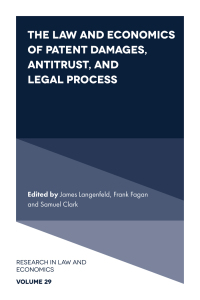Stewart Enterprises has the following investments, all purchased prior to 2024: Stewart does not intend to sell any of these investments and does not believe it is more likely than not that it will have to sell any of the bond investments before fair value recovers. Required: Prepare the appropriate adjusting journal entries to account for each investment for 2024 and 2025. 1. Bee Company 7% bonds, purchased at face value, with an amortized cost of $4,440,000, and classified as held-to-maturity. At December 31, 2024, the Bee investment had a fair value of $3,610,000, and Stewart calculated that $460,000 of the fair value decline is a credit loss and $370,000 is a noncredit loss. At December 31,2025 , the Bee investment had a fair value of $3,810,000, and Stewart calculated that $250,000 of the difference between fair value and amortized cost was a credit loss and $380,000 was a noncredit loss. 2. Olver Corporation 6% bonds, purchased at face value, with an amortized cost of $2,830,000, classified as a trading security. Because of unrealized losses prior to 2024 , the Oliver bonds have a fair value adjustment account with a credit balance of $310,000, such that the carrying value of the Oliver investment is $2,520,000 prior to making any adjusting entries in 2024 . At December 31,2024 , the Oliver investment had a fair value of $2,310,000, and Stewart calculated that $230,000 of the difference between amortized cost and fair value is a credit loss and $290,000 is a noncredit loss. At December 31,2025 , the Oliver investment had a fair value of $3,140,000. 3. Jones incorporated 8% bonds, purchased at face value, with an amortized cost of $3,830,000, and classified as an available-forsale investment. Because of unrealized losses prior to 2024, the Jones bonds have a fair value adjustment account with a credit balance of $510,000, such that the carrying value of the Jones investment is $3,320,000 prior to making any adjusting entries in 2024. At December 31, 2024, the Jones investment had a fair value of $2,810,000, and Stewart calculated that $280,000 of the difference between amortized cost and fair value is a credit loss and $740,000 is a noncredit loss. At December 31,2025 , the Jones investment had a fair value of $3,095,000, and Stewart calculated that $180,000 of the difference between amortized cost and fair value is a credit loss and $555,000 is a noncredit loss. Complete this question by entering your answers in the tabs below. Bee Company 7% bonds, purchased at face value, with an amortized cost of $4,440,000, and classifled as held-to-maturity. At December 31,2024 , the Bee investment had a fair value of $3,610,000, and Stewart calculated that $460,000 of the falr value decilne is a credit loss and $370,000 is a noncredit loss. At December 31, 2025, the Bee investment had a fair value of $3,810,000, and $ tewart Bee Company 7% bonds, purchased at face value, with an amortized cost of $4,440,000, and classified as held-to-maturity, At December 31,2024 , the Bee investment had a fair value of $3,610,000, and Stewart calculated that $460,000 of the fair value decline is a credit loss and $370,000 is a noncredit loss. At December 31,2025 , the Bee investment had a fair value of $3,810,000, and Stewart calculated that $250,000 of the difference between fair value and amortized cost was a credit loss and $380,000 was a noncredit loss. Prepare the appropriate adjusting journal entries to account for each investment for 2024 and 2025. Note: If no entry is required for a transaction/event, select "No journal entry required" in the first account field. Show lessi (1) Record any necessary journal entry for the credit losses. 2 Record any necessary journal entry for recovery of credit loss in 2025. Note : = journal entry has been entered Oliver Corporation 6% bonds, purchased at face value, with an amortized cost of $2,830,000, classifled as a trading security. Because of unrealized losses prior to 2024, the Oliver bonds have a fair value adjustment account with a credit balance of $310,000, such that the carrying value of the Oliver investment is $2,520,000 prior to making any adjusting entries in 2024. At December 31, 2024, the Oliver investment had a fair value of $2,310,000, and Stewart calculated that $230,000 of the difference between amortized cost and fair value is a credit loss and $290,000 is a noncredit loss. At December 31,2025 , the Oliver investment had a fair value of $3,140,000. Prepare the appropriate adjusting journal entries to account for this investment for 2024 and 2025. Note: If no entry is required for a transaction/event, select "No journal entry required" in the first account field. Show less: A Record the fair value adjustment. Record the fair value adjustment. Jones Incorporated 8% bonds, purchased at face value, with an amortized cost of $3,830,000, and classified as an avaliable-for-sale investment. Because of unrealized losses prior to 2024 , the Jones bonds have a fair value adjustment account with a credit balance of $510,000, such that the carrying value of the Jones investment is $3,320,000 prior to making any adjusting entries in 2024 . At December 31,2024 , the Jones investment had a fair value of $2,810,000, and Stewart calculated that $280,000 of the difference between amortized cost and fair value is a credit loss and $740,000 is a noncredit loss. At December 31,2025, the Jones investment had a fair value of $3,095,000, and Stewart calculated that $180,000 of the difference between amortized cost and fair value is a credit loss and $555,000 is a noncredit loss. Prepare the appropriate adjusting journal entries to account for this investment for 2024 and 2025. Note: If no entry is required for a transaction/event, select "No journal entry required" in the first account field. Record any necessary journal entry for the credit losses. 2. Record the fair value adjustment. Record any necessary journal entry for recovery of credit ioss in 2025. 4 Record the fair value adjustment










